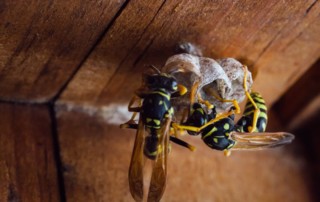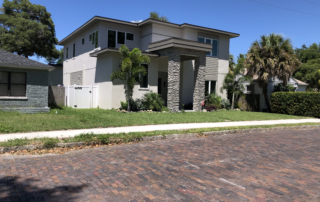Asphalt shingle roofs are exposed to the elements soon after installation, and that begins the countdown to the expected end of their life span, which usually takes about 20 to 30 years.
The average lifespan of a shingle roof is based on a number of factors. Longevity depends on the climate of our Sarasota County area, the way the original installation was handled, and whether ongoing care and maintenance have been part of a regular routine.
Asphalt shingles begin to age right after manufacture, as they get exposed to oxygen. This process is slower than it was thanks to modern packaging methods. The first few months after installation allows the adhesives and the asphalt shingles to “cure”, creating a tougher outer layer.
Your Roof’s First Decade
The first 10 years of an asphalt shingle roof’s lifecycle is the roof at its prime. Installation errors become apparent during these first few years, though. This is the time when a roofing contractor’s workmanship, as well as their warranty coverage, is tested.
The Later Stages of Your Roofs Life
Scheduled maintenance becomes even more important as your roof enters the second half of its expected lifespan. At this stage, expect more signs of wear and tear to appear, such as surface cracking, wind stress and later signs like curling and cupping. The best asphalt shingles may display signs of aging much later.
Additional Factors
Extremes in temperature are what affect the life of shingles and roofing materials. Obviously, warmer environments are going to limit shingle life. Shingles that experience abnormal temperature changes within short periods of time are not able to expand and contract as they should when wide temperature variations occur, such as 100 degrees during the day and considerably lower temperatures of below 50 at night.
Shingles don’t necessarily adapt to such intense variations in temperature. Splits, cracks and other damage appear with shingles that have been exposed to temperature extremes and water can get into those areas and create further damage.
Here’s a list of conditions that affect roof longevity:
- Color of roof – A dark roof absorbs more heat, which shortens the lifespan
- Angle of roof slope – Higher pitch roofs tend to last longer.
- Orientation of roof surface – A roof slope facing south will get more sunlight, and have a shorter life.
- Multiple-layer roof – A roof installed over an existing roof will have a shorter life.
- Quality of roof material – “Economy” roof materials have a shorter life.
- Installation – Sloppy or improper installation shortens roof life.
- Attic ventilation – An unventilated or poorly ventilated attic reduces roof lifespan.
- Trees near roof – Tree branches rubbing on a roof or the acidity from the accumulation of leaf debris on a roof shortens its life.
- Harsh climate – Severe weather, hot summers like the type we experience here in South Florida, also shorten lifespan because of the expansion and contraction of roof materials.
Conclusion
The average lifespan of a roof can be extended with the right information and precautions. This is one of the many reasons that we recommend getting an annual roof inspection from an experienced Florida roofing contractor near you.



